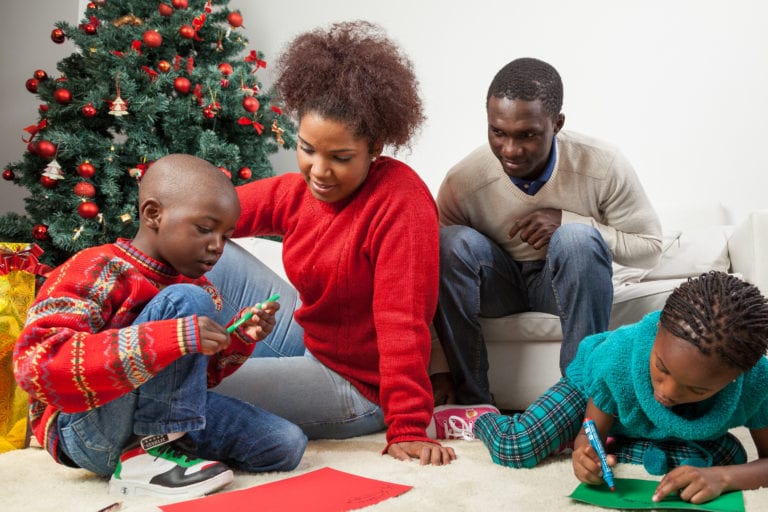10 Empowering Self-Esteem Activities for Teens: Positive Discipline
Disclosure: This post may contain affiliate links, meaning I may get a small commission if you decide to make a purchase through my links, at no cost to you.

10 Empowering Self-Esteem Activities for Teenagers: Positive Discipline
Introduction to Self Esteem Activities for Teenagers
Did you know that a staggering 80% of teenagers struggle with self-esteem issues at some point during their adolescence? It’s a critical time when young minds are shaping their identities, understanding their core beliefs and learning how to navigate the world.
As parents and educators, we have the power to make a difference! In this article, we’ll explore 10 fantastic confidence building activities for teenagers that not only boost confidence, but also incorporate positive discipline techniques. Get ready to transform your approach and help your teens thrive!
Alright, let’s dive into the topic of self esteem activities for teens to help create a positive outlook and build confidence! As a mom of four and someone who’s spent years working with kids, I’ve seen firsthand how crucial self-esteem and positive discipline are in shaping our teens.
Definition of self-esteem and its importance in teenage development
You know, when I was a teenager myself, I thought self-esteem was just about feeling good about yourself. Boy, was I wrong! It’s so much more complex than that, especially for teenagers.
Self-esteem is basically how a person values themselves. It’s like an internal scorecard of our worth. For teens, it’s as if they’re constantly updating this scorecard based on every little thing that happens to them. One minute they’re on top of the world, the next they’re questioning everything about themselves. It’s exhausting just thinking about it!
According to the National Institutes of Health, about 20% of teens struggle with low self-esteem. That’s one in five kids! As a mom, that statistic breaks my heart.
Why is self-esteem so important during the teenage years? Well, it’s like the foundation of a house. If it’s solid, everything else can be built on top of it. Good self-esteem helps teens:
- Make better decisions (like saying no to peer pressure)
- Handle stress and setbacks more effectively
- Form healthier relationships
- Set and achieve goals
I remember when my youngest hit her teens. She went from this confident kid to someone who second-guessed every decision. It was tough to watch, but it really drove home how critical this developmental stage is.
Explanation of positive discipline and how it differs from traditional disciplinary methods
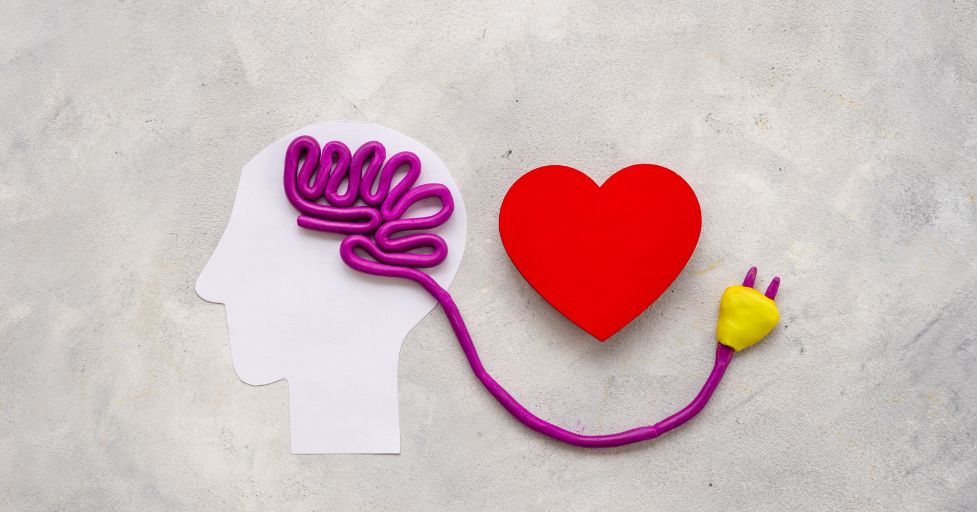
Now, let’s talk about positive discipline. This is something I wish I’d known about when I first became a mom.
Positive discipline is all about teaching and guiding, rather than punishing. It’s like the difference between showing someone how to fish and just yelling at them for not catching any fish. Yelling at our kids is one way to establish negative core beliefs in our teens.
Traditional disciplinary methods often rely on punishment or rewards. You know, the whole “do this or else” approach. But positive discipline? It’s more about helping kids understand the natural consequences and logical consequences of their actions and teaching them how to make better choices.
Here’s a real-life example: When I was teaching preschool, we had a kid who kept hitting others. The old me would’ve put him in time-out. But with positive discipline, we worked on identifying his feelings and finding better ways to express them. It took longer, but the results were amazing! Not only was this a game changer in improving his behavior, But this just one of the many self esteem activities for teenagers and kids,
Some key elements of positive discipline include:
- Setting clear expectations
- Using natural consequences
- Encouraging problem-solving
- Focusing on solutions rather than punishment
It’s not always easy, though. I’ll admit, there are times when I just want to say, “Because I said so!” But I’ve learned that taking the positive discipline approach pays off in the long run.
Related:
Powerful Alternatives to Yelling
Natural Consequences and Examples
Logical Consequences Definition and Examples
Positive Vs Punishment Worksheets
The connection between positive discipline and improved self-esteem in teens
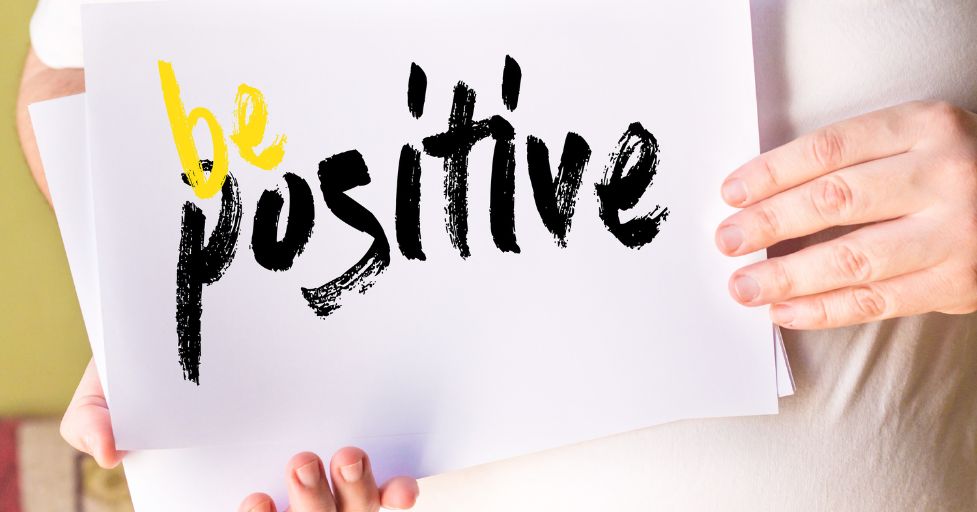
Now, here’s where it all comes together. Positive discipline and self-esteem are like peanut butter and jelly – they just work better together!
When we use positive discipline with teens, we’re showing them that we respect them as individuals. We’re not just barking orders; we’re involving them in the process. This approach can do wonders for their self-esteem.
I’ve seen this play out with my own kids and the special needs young adults I work with now. When we use positive discipline techniques, they feel heard and valued. It’s like watching a flower bloom – they start to stand a little taller, speak up more confidently.
Here’s how positive discipline boosts self-esteem:
- It teaches problem-solving skills, making teens feel capable
- It focuses on strengths, not just weaknesses
- It encourages self-reflection and personal growth
- It builds a stronger, more positive relationship between teens and adults
Of course, it’s not always smooth sailing. I remember one particularly rough patch with my second daughter. We butted heads constantly until I really committed to positive discipline. It took time, but gradually, I saw her confidence grow. She started taking more initiative, making better choices. It was like night and day!
The American Psychological Association has found that authoritative parenting (which aligns closely with positive discipline) is associated with higher self-esteem in adolescents. That’s some solid evidence backing up what I’ve seen in my own experience.
In the end, using positive discipline isn’t just about managing behavior. It’s about nurturing our teens’ self-esteem, helping them become confident, capable adults. And isn’t that what we all want for our kids?
So, next time your teen rolls their eyes or slams a door, take a deep breath. Remember, how we respond can make a big difference in their self-esteem. It’s not always easy, but trust me, it’s worth it!
Activity 1: The “I Am” Vision Board Self Esteem Exercises
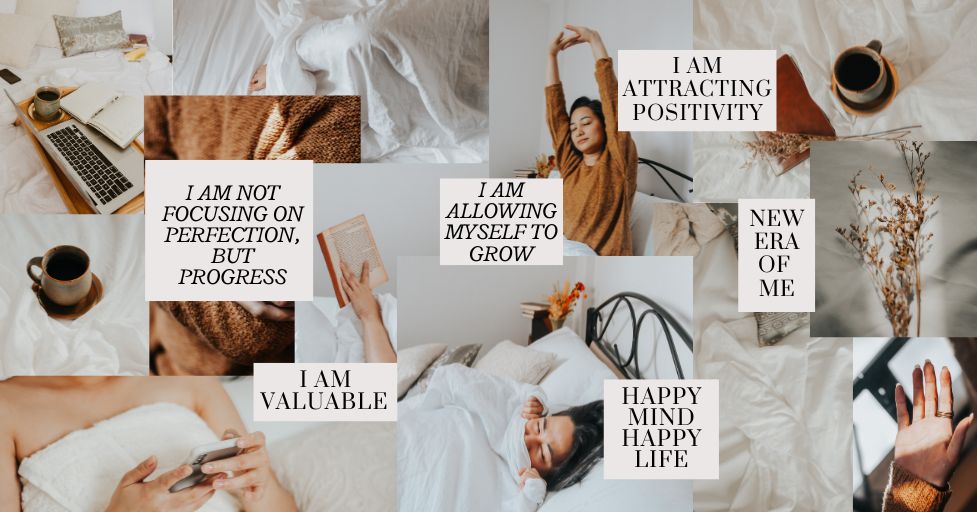
Oh boy, do I love a good vision board! When I first heard about this activity, I thought it was just another trendy craft project. But let me tell you, it’s so much more than that. I’ve used this with my own kids, my preschoolers back in the day, and now with the special needs young adults I work with. It’s a game-changer, folks!
Materials needed for the activity
Alright, let’s talk supplies. You don’t need anything fancy for this, I promise. Here’s what you’ll want to gather:
- A large poster board or cork board (I’ve even used the back of an old cardboard box in a pinch)
- Magazines (the more variety, the better)
- Scissors (safety first, especially with the younger ones!)
- Glue sticks or tape
- Markers or colored pencils
- Optional: stickers, washi tape, or any other decorative items
Pro tip: Don’t go out and buy new magazines. Ask friends, family, or your local library if they have any old ones they’re getting rid of. Trust me, your wallet will thank you!
Step-by-step guide to creating personal vision board self esteem projects

Okay, here’s where the magic happens. Follow these steps, and you’ll have an awesome “I Am” vision board in no time:
- Set the mood: Create a chill environment. Maybe put on some music, light a candle if you’re feeling fancy. The goal is to get those creative juices flowing!
- Brainstorm: Before you start flipping through magazines, take a few minutes to think about who you are and who you want to be. What are your strengths? Your dreams? Your values? Jot these down.
- Magazine scavenger hunt: Now, flip through those magazines and cut out anything that speaks to you. Words, images, quotes – if it resonates, snip it out! Don’t overthink it.
- Organize your findings: Lay out all your cutouts on the floor or a table. Start grouping them in a way that makes sense to you.
- Create your board: Arrange and glue your cutouts onto your board. There’s no right or wrong way to do this. It’s your vision, after all!
- Add personal touches: Use markers to write affirmations or goals. Add stickers or doodles if you’re feeling artsy.
- Display with pride: Find a spot where you’ll see your board every day. It could be in your bedroom, study area, or even take a picture of it for your phone background!
I remember when one of our students was struggling with self-confidence at school. We spent a few days making vision boards together. It was like watching a lightbulb turn on – she started seeing herself in a whole new light!
H3: How this and other self esteem booster activities promotes self-reflection and goal-setting
Now, you might be wondering, “How does cutting and pasting pictures actually help?” Well, let me break it down for you.
First off, this activity to build self esteem is all about self-reflection. When you’re choosing images and words for your board, you’re really thinking about who you are and what matters to you. It’s like holding up a mirror to your inner self.
According to a study by TD Bank, people who visualize their goals are 1.2-1.4 times more likely to achieve them. That’s pretty powerful stuff!
Here’s how the “I Am” vision board promotes self-reflection and goal-setting:
- It makes abstract concepts concrete: Sometimes, it’s hard for teens (heck, even for us adults!) to articulate who we are or what we want. The vision board gives these abstract ideas a visual form.
- It encourages positive self-talk: By focusing on positive “I Am” statements, we’re training our brains to think more positively about ourselves. It’s like a workout for your self-esteem!
- It sets intentions: When you put something on your vision board, you’re saying, “This is important to me.” It’s a way of setting intentions for your life.
- It provides daily motivation: Having your vision board somewhere visible serves as a constant reminder of your goals and values. On tough days, it can be just the boost you need.
- It sparks creativity: The process of creating the board gets those creative juices flowing, which can lead to new insights about yourself.
I’ve seen firsthand how powerful this can be. One of my special needs students was really struggling with self-worth. We made an “I Am” board together, and over time, I saw him start to embody the positive traits he’d put on his board. It was like watching a flower bloom in slow motion – beautiful and inspiring.
Of course, the vision board isn’t a magic wand. It won’t suddenly make all your dreams come true. But it’s a fantastic tool for self-discovery and motivation. It’s about planting seeds of positivity and watching them grow.
So, why not give it a try? Gather your supplies, carve out some time, and see what happens. You might just surprise yourself with what you create. And remember, there’s no such thing as a “perfect” vision board. It’s all about the process and what it means to you. Happy crafting, folks!
Activity 2: Daily Affirmation Journal Self Esteem Exercies

Let me tell you, when I first heard about affirmation journals, I thought it was some new-age mumbo jumbo. I was wrong! This little practice has been a total game-changer for me, my kids, and the teens I work with. It’s like a daily pep talk, but better! I often joke that these self esteem building activities are better than therapy.
Benefits of positive self-talk and affirmations
Okay, so here’s the deal with positive self-talk and affirmations. They’re like mental vitamins for your brain. I know it sounds a bit woo-woo, but hear me out.
When I was teaching preschool, I had this little guy who kept saying, “I can’t do it” whenever we tried something new. It broke my heart. That’s when I realized how powerful our inner voice can be, even for kiddos.
The benefits of positive self-talk are pretty mind-blowing:
- It boosts confidence: When you regularly tell yourself good things, you start to believe them. It’s like magic, but it’s actually science!
- It reduces stress: Positive self-talk can help calm your nerves. I’ve seen this work wonders with my special needs students during challenging assignments.
- It improves performance: Whether it’s sports, academics, or just everyday tasks, positive self-talk can give you that extra oomph.
- It builds resilience: Life’s gonna throw curveballs, but positive self-talk helps you bounce back faster.
According to a study in the Journal of Personality and Social Psychology, people who practice self-affirmation have lower stress levels and are better problem-solvers. How cool is that?
Tips for starting and maintaining an affirmation journal
Now, let’s get down to the nitty-gritty of starting an affirmation journal. Trust me, it’s easier than you think!
- Choose your journal: Any notebook will do, but pick one that makes you happy. I love those sparkly ones – whatever floats your boat!
- Set a daily time: Consistency is key. I do mine just before its time for bed, but first thing in the morning works great too. Just find a time that fits your routine.
- Start small: Don’t pressure yourself to write a novel. Even one affirmation a day is great!
- Be specific: Instead of “I am good,” try “I am good at solving math problems.” The more specific, the better.
- Use present tense: Write as if it’s already true. “I am” statements are super powerful.
- Feel it: Don’t just write it, believe it! Really let those positive vibes sink in.
- Read them out loud: This feels silly at first (trust me, I know), but it really helps cement those affirmations.
- Update regularly: As you grow and change, so should your affirmations. It’s okay to switch things up!
I’ll be honest, when I first started this with some students, it was like pulling teeth. But now? They remind me if we forget! It’s become a special part of our routine.
Examples of powerful affirmations for teenagers
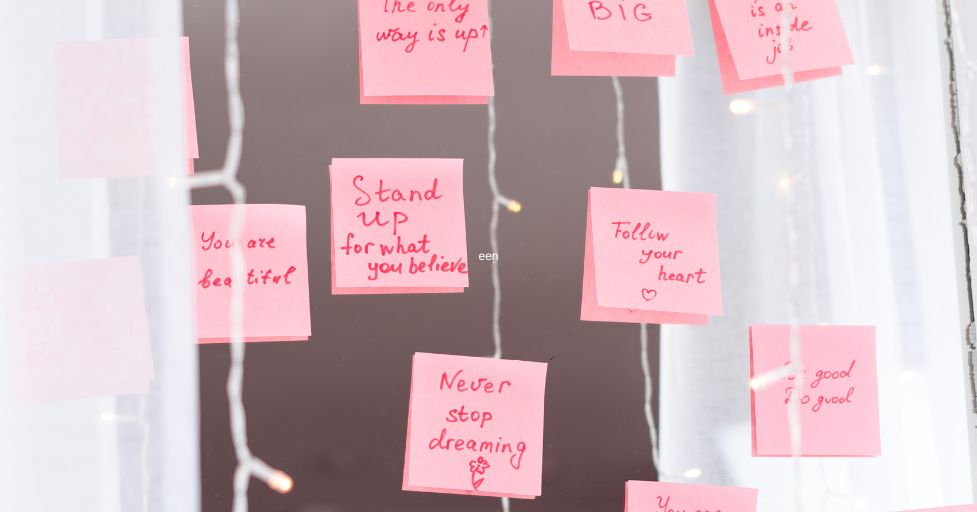
Alright, let’s talk about some affirmations that really resonate with teens. I’ve gathered these from my own kids, my students, and some good old trial and error.
- “I am capable of handling whatever comes my way.”
- “My voice matters and deserves to be heard.”
- “I choose to focus on what I can control.”
- “Mistakes are opportunities for me to learn and grow.”
- “I am enough, just as I am.”
- “My uniqueness is my superpower.”
- “I trust in my ability to make good decisions.”
- “I am worthy of love and respect.”
- “My feelings are valid, and it’s okay to express them.”
- “I am becoming the best version of myself every day.”
I remember when one student was struggling with household activities we were teaching her. We started using the affirmation, “I am improving in every day.” At first, she rolled her eyes so hard I thought they might stick that way! But after a few weeks, I noticed a change. She was approaching her work with less dread and more determination.
One of my special needs students had a breakthrough with “I am brave enough to try new things.” It was like watching a flower bloom – he started participating more in class activities he used to shy away from.
Now, here’s the thing: affirmations aren’t a magic wand. They won’t instantly solve all your problems. But they’re like mental push-ups. The more you do them, the stronger your mind gets.
And let’s be real, some days it feels downright silly. There’ve been mornings where I’m standing in front of the mirror, saying these affirmations, and I just start laughing at myself. But you know what? That laughter is good too! It’s all part of the process.
So, give it a shot. Encourage your teens to try out these self esteem exercises for youth. It might feel weird at first, but stick with it. You might just be surprised at the changes you see.
And remember, in the words of the great Muhammad Ali, “It’s the repetition of affirmations that leads to belief. And once that belief becomes a deep conviction, things begin to happen.” Now, if that’s not motivation to start journaling, I don’t know what is!
Activity 3: Strength Spotting Challenge Activities for Building Self Esteem
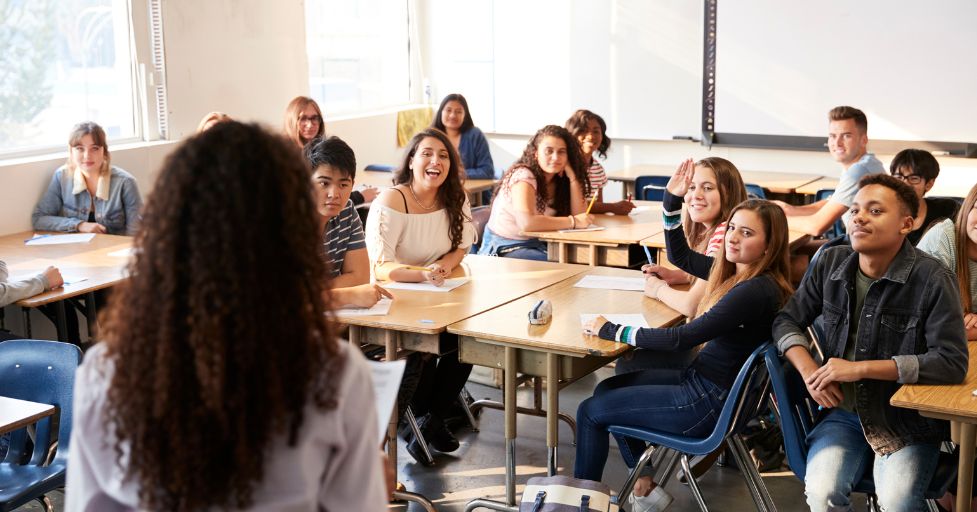
Let me tell you about strength spotting! This is one of those activities that totally changed the game for me, both as a mom and as an educator. It’s like putting on a pair of superhero glasses that let you see the best in everyone – including yourself!
Explanation of the concept of strength spotting
So, what the heck is strength spotting anyway? Well, it’s pretty much exactly what it sounds like – spotting strengths in yourself and others. But here’s the kicker: it’s not just about noticing the obvious stuff. It’s about digging deeper and recognizing those hidden superpowers we all have.
I remember when I first learned about this concept. I was at a teacher’s conference, feeling pretty burnt out, if I’m being honest. The speaker started talking about strength spotting, and I thought, “Great, another fluffy feel-good exercise.” But by the end of that session, I was a total convert!
Here’s the deal: We’re all hardwired to focus on the negative. It’s like our brains are Velcro for bad stuff and Teflon for good stuff. Strength spotting is all about flipping that script. It’s about training our brains to notice and appreciate the good in ourselves and others.
According to the VIA Institute on Character, there are 24 character strengths that fall under six broad virtues. Things like creativity, curiosity, bravery, kindness – we all have these strengths to some degree. The trick is learning to spot them!
How to implement the self esteem building challenge with teens
Alright, so how do we turn this into a fun challenge for teens? Here’s what’s worked for me:
- Kick it off with a strength assessment: There are free online tests that teens can take to identify their top strengths. It’s a great starting point!
- Set a daily goal: Challenge teens to spot one strength in themselves and one in someone else each day.
- Make it visual: Create a strength spotting board or journal. Encourage teens to write down or draw the strengths they spot.
- Share the love: Have a daily or weekly check-in where everyone shares the strengths they’ve spotted in others.
- Lead by example: As the adult, make sure you’re actively participating and sharing your own strength spots.
- Mix it up: Sometimes, challenge teens to spot a different strength each day, to broaden their awareness.
- Reflect: At the end of each week, have a group discussion about what everyone’s learned.
I tried this with my own kids first. Let me tell you, it was a bit of a disaster at the start! My teenagers looked at me like I had two heads when I suggested it. But I persevered, and after a few days, something magical started happening.
My oldest daughter came home the other day and said, “Mom, you try hard to succeed at everything you do.” I nearly fell over! It was like someone had flipped a switch in our household.
Ways this activity fosters self-awareness and appreciation
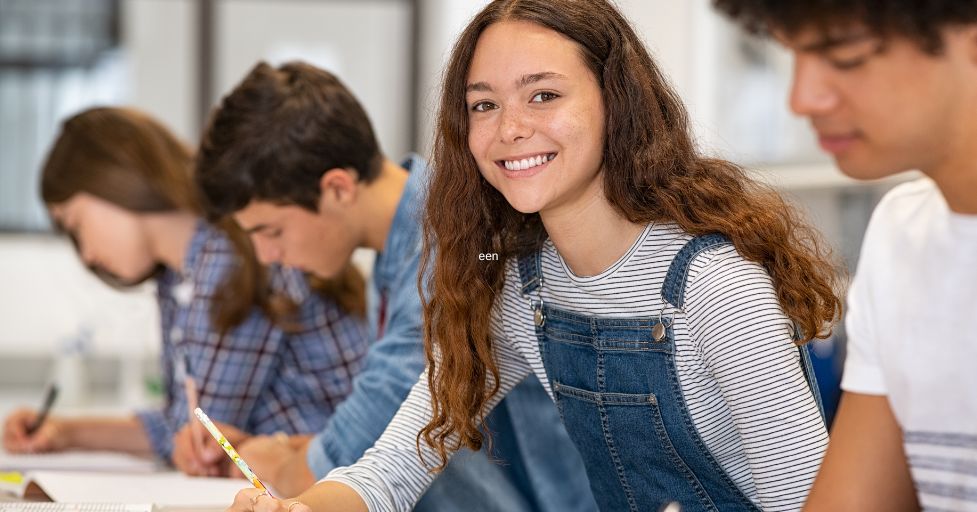
Now, here’s where the rubber really meets the road. This strength spotting challenge? It’s not just a fun activity. It’s a total game-changer when it comes to self-awareness and appreciation. Here’s how:
- It builds a positive mindset: When you’re actively looking for strengths, you start seeing the good in everything. It’s like putting on rose-colored glasses, but in a good way!
- It boosts self-esteem: Recognizing your own strengths? That’s a one-way ticket to confidence city. I’ve seen kids who were constantly down on themselves start to stand a little taller.
- It improves relationships: When you’re focused on spotting strengths in others, it’s hard to stay mad at them. I’ve seen this work wonders with sibling rivalries and with my husband!
- It develops empathy: Looking for strengths in others helps teens see things from different perspectives. It’s like a crash course in walking in someone else’s shoes.
- It encourages growth: When teens spot a strength they admire in someone else, it often motivates them to develop that strength in themselves.
- It creates a positive feedback loop: The more you spot strengths, the more attuned you become to them. It’s like training a muscle – it gets stronger with use!
I remember one of my special needs students, a boy who struggled with severe anxiety. We started the strength spotting challenge in class, and at first, he could barely participate. But slowly, he started to open up. One day, he said, “I opened the door for someone today. I am a really nice person.” I nearly cried right there!
A study published in the Journal of Happiness Studies found that using character strengths in new ways each day for a week increased happiness and decreased depression for six months. Six months! That’s some powerful stuff, folks.
Now, I’m not gonna lie – implementing these motivational activities for teenagers isn’t always smooth sailing. There will be days when the teens (or you!) just aren’t feeling it. That’s okay. The key is to keep at it, even when it feels silly or pointless.
And here’s a pro tip: Make it fun! Turn it into a game, offer small rewards, or create a strength-spotting scavenger hunt. The more enjoyable it is, the more likely teens are to stick with it.
So, are you ready to put on your strength-spotting glasses? Trust me, once you start seeing the world through this lens, you won’t want to take them off. It’s like discovering superpowers you never knew you had – in yourself and in others. And in my book, that’s pretty darn cool!
Activity 4: Mindfulness Meditation for Self-Compassion
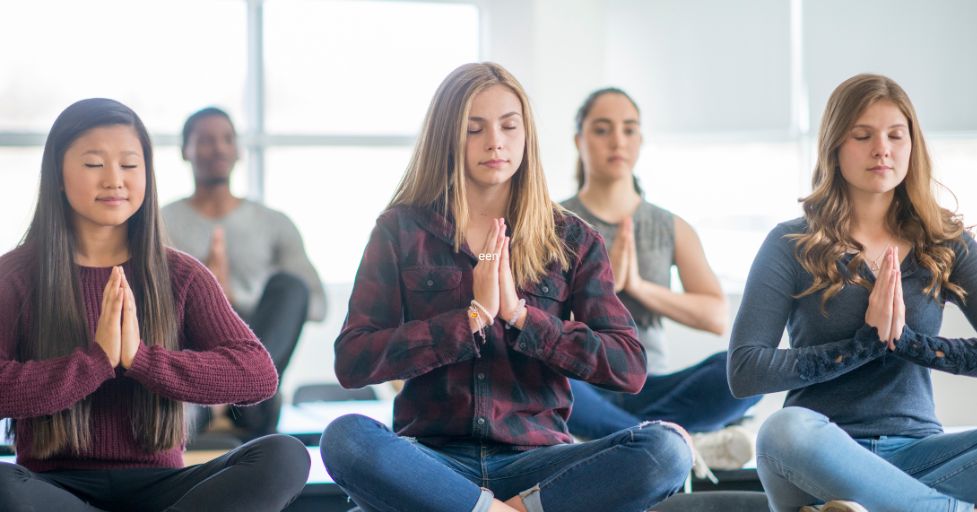
Alright, let’s talk about mindfulness meditation. Now, I know what you’re thinking – “Isn’t that just for yoga enthusiasts and zen masters?” That’s exactly what I thought when I first heard about it! But let me tell you, this stuff is like a secret weapon for teenagers (and, honestly, for frazzled moms like me too!).
Introduction to mindfulness and its benefits for teenagers
So, what’s the deal with mindfulness? It’s basically about being fully present in the moment, without getting all tangled up in worries about the future or regrets about the past. Sounds simple, right? Ha! If you’ve ever tried to get a teenager to focus on anything other than their phone, you know it’s not that easy.
I remember trying to introduce mindfulness to my high school class for the first time. It was like herding cats! But once we got the hang of it, the changes I saw were pretty amazing.
Here’s the lowdown on why mindfulness is so awesome for teens:
- Stress reduction: It’s like a chill pill for the brain. The American Psychological Association reports that teens who practice mindfulness show lower levels of perceived stress.
- Improved focus: It’s like giving their attention span a workout. My kids’ teachers have actually commented on the improvement!
- Better emotional regulation: It helps teens understand and manage their emotions. No more drama llama explosions (well, fewer at least).
- Increased self-awareness: It’s like holding up a mirror to their inner world.
- Better sleep: This one’s huge. A study in the Journal of Adolescent Health found that mindfulness can improve sleep quality in teens.
I gotta admit, I was skeptical at first. But after seeing how it helped one of my special needs students manage his anxiety, I was sold. This kid went from having daily meltdowns to being able to calm himself down with a few deep breaths. It was like watching a miracle unfold!
Simple guided meditation script for self-compassion

Okay, ready to give this a whirl? Here’s a simple script I use with my students. It’s great for self-compassion, which is something a lot of teens (and adults!) struggle with.
Find a comfy spot and close your eyes. Take a deep breath in… and out.
Now, think of a time when you were kind to someone. Remember how that felt.
As you breathe in, say to yourself, “May I be kind to myself.” As you breathe out, say, “May I accept myself as I am.”
Repeat this a few times.
Now, place your hand over your heart. Feel the warmth and gentle pressure.
As you breathe in, say, “May I be patient with myself.” As you breathe out, say, “May I be gentle with myself.”
Repeat this a few times.
Take one more deep breath, and when you’re ready, open your eyes.
The first time I tried this with my teenagers at home, my daughter let out a big sigh when I told her to put her hand on his heart.Cue eyeroll. But you know what? By the end of the week, I caught her doing it on her own before a big test. Talk about a proud mama moment!
How regular practice can improve self-esteem and emotional regulation

Now, here’s the real kicker – this isn’t a one-and-done activities to build self esteem. It’s like exercise for your brain. The more you do it, the stronger those mindfulness muscles get!
Regular mindfulness practice self esteem building exercises can also build emotional regulation. Here’s how:
- It builds self-awareness: The more teens tune into their thoughts and feelings, the better they understand themselves. It’s like becoming fluent in their own inner language.
- It reduces negative self-talk: Mindfulness helps catch those mean little voices in our heads and show ’em the door.
- It promotes self-compassion: Teens learn to treat themselves with the same kindness they’d show a friend. No more beating themselves up over every little thing!
- It improves emotional regulation: By observing their emotions without judgment, teens learn to respond rather than react. It’s like installing a pause button between feeling and action.
- It boosts confidence: As teens get better at managing their thoughts and emotions, they feel more in control. And let me tell you, confidence looks good on everyone!
A study in the journal Mindfulness found that after an 8-week mindfulness program, adolescents reported significantly higher self-esteem and life satisfaction. How’s that for impressive?
I’ve seen this play out in real-time with my students. There was this girl, always putting herself down, never thought she was good enough. We started mindfulness exercises, just five minutes at the start of class. After a few weeks, I noticed she was volunteering answers more, making eye contact, even cracking jokes!
Now, I’m not gonna lie – getting teens (or anyone, really) to stick with a mindfulness practice can be tough. There will been more than one occasion where you may need to bribe kids with extra screen time just to get them to sit still for five minutes! But trust me, it’s worth it.
Here are some tips to make it stick:
- Start small: Even one minute a day is better than nothing.
- Make it routine: Try tying it to something they already do daily, like brushing teeth.
- Use apps: There are tons of great mindfulness apps out there. My kids love the ones with fun animations.
- Lead by example: If they see you doing it, they’re more likely to join in.
- Be patient: It might feel weird or pointless at first. That’s normal!
Remember, the goal isn’t to empty the mind or achieve some state of perfect zen. It’s about learning to be present, to treat ourselves with kindness, and to navigate the wild rollercoaster of emotions that come with being a teenager (or parenting one!).
So go ahead, give it a try. You might just find that a little mindfulness goes a long way in boosting self-esteem and keeping those teenage emotions on a more even keel. And hey, you might even find yourself feeling a bit more zen in the process. Win-win, if you ask me!
Activity 5: The Gratitude Jar Self Confidence Exercises for Teenagers
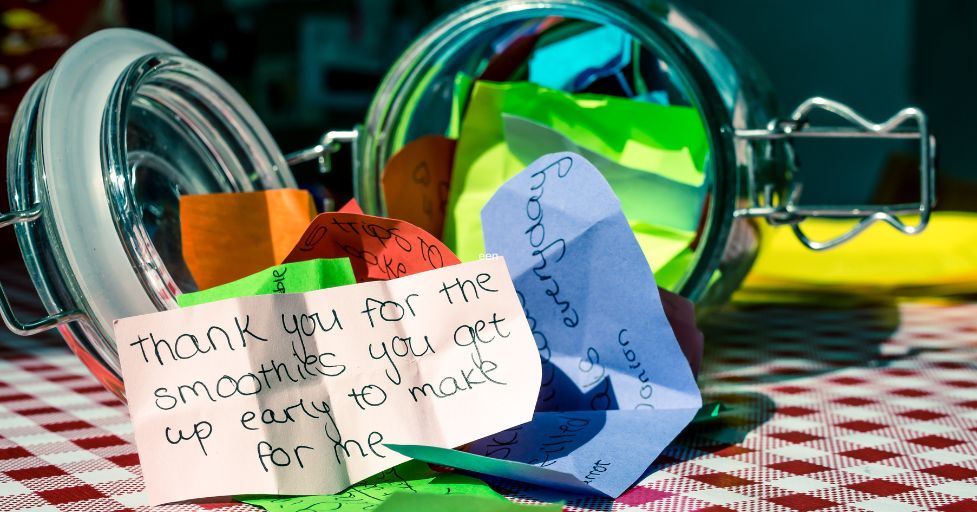
Let me tell you about the Gratitude Jar! This little gem of an activity has been a total game-changer in my house and classroom. It’s like a happiness piggy bank, but instead of coins, you’re saving up moments of joy and appreciation. It’s way more valuable!
Materials and setup for the gratitude jar activity
Alright, let’s get down to the nitty-gritty of setting up your very own Gratitude Jar. It’s so simple, you’ll wonder why you didn’t start one years ago!
Here’s what you’ll need:
- A jar or container: Any size will do, but I prefer something big enough to hold a lot of gratitude! I’ve used everything from mason jars to old cookie jars. One time, I even repurposed an old pot – talk about a conversation starter!
- Paper: Small slips work great. You can get fancy with colored paper if you want, but plain old scrap paper does the job just fine.
- Pens or markers: Nothing special needed here, folks. Just make sure it writes!
- Decorations (optional): If you’re feeling crafty, go wild! Stickers, ribbons, paint – whatever floats your boat.
Setting it up is a breeze:
- Clean out your jar (especially important if you’re using an old cookie jar!).
- Decorate it if you want. My kids went to town on ours with glitter glue. It looked like a disco ball exploded, but hey, it made them excited about the project!
- Cut up your paper into small slips. These come in strips
- Place the jar, paper slips, and pens in an easily accessible spot.
That’s it! You’re ready to start collecting gratitude.
How to incorporate this into daily or weekly routines

Now, here’s where the rubber meets the road. Having a pretty jar is great, but the magic happens when you actually use it. Here’s how to make the Gratitude Jar a part of your routine:
- Set a specific time: It can be as much a part of your evening routine as brushing teeth.
- Start small: Aim for one gratitude slip per person per day. It’s okay if you miss a day here and there – no guilt trips allowed!
- Lead by example: As the adult, make sure you’re consistently adding to the jar. Your enthusiasm will be contagious!
- Make it a game: Sometimes you can challenge each other to find the most unique thing to be grateful for. You’d be amazed at what kids come up with!
- Do a weekly review: Read out loud what you’ve put in the jar that week. It’s like a greatest hits of happiness!
- Celebrate milestones: When the jar is full, have a special celebration. Maybe have a “gratitude sundae parties” – ice cream optional, but highly recommended!
I remember when we first started this at our home during November to prepare for Thanksgiving. It was like pulling teen to get the family to participate was like pulling teeth. But after a few weeks, they was were really getting into it. One of my kids wrote, “I’m grateful the teacher didn’t give us homework today.” You gotta start somewhere, right?
The impact of gratitude on self-esteem and overall well-being

Okay, here’s where it gets really cool. This isn’t just self esteem activities for middle school and teens – it’s like a secret weapon for overall well-being. And I’m not just saying that because it sounds good. There’s actual science behind this!
A study published in the Journal of School Psychology found that gratitude in adolescents was associated with higher levels of optimism, life satisfaction, and social support. It’s like a happiness triple threat!
Here’s how gratitude works its magic:
- It shifts focus: Instead of dwelling on what’s wrong, kids start noticing what’s right. It’s like putting on rose-colored glasses, but in a good way!
- It builds resilience: When kids can find something to be grateful for even on tough days, it helps them bounce back faster.
- It improves relationships: Expressing gratitude makes us nicer to be around. Who knew?
- It boosts self-esteem: Recognizing the good in their lives helps kids feel more valued and capable.
- It reduces stress: Focusing on gratitude can actually lower cortisol levels. It’s like a chill pill for the brain!
I’ve seen this play out firsthand with my own kids and students. There was this one time when my daughter was having a really rough week at school. Friend drama, tough tests, you name it. But every night, she still found something to put in the Gratitude Jar.
And it’s not just for kids. I gotta admit, there’ve been days when I’ve been at my wit’s end, ready to throw in the towel. But that little jar sitting on our kitchen counter reminds me to take a deep breath and find something good in the day. It’s like a reset button for your mood.
Now, I’m not saying the Gratitude Jar is some kind of miracle cure-all. There’ve been plenty of eye rolls and groans along the way. But stick with it, and I promise you’ll start seeing changes.
Here’s a pro tip: Don’t force it. If someone’s having a really tough day and can’t think of anything to be grateful for, that’s okay. The goal is to cultivate gratitude, not force it.
So, are you ready to start your own Gratitude Jar? Trust me, your future self will thank you. And who knows? You might just find yourself with a happier, more confident bunch of kids (and a happier, more confident you!). Now that’s something to be grateful for!
Activity 6: Positive Peer Feedback Circles
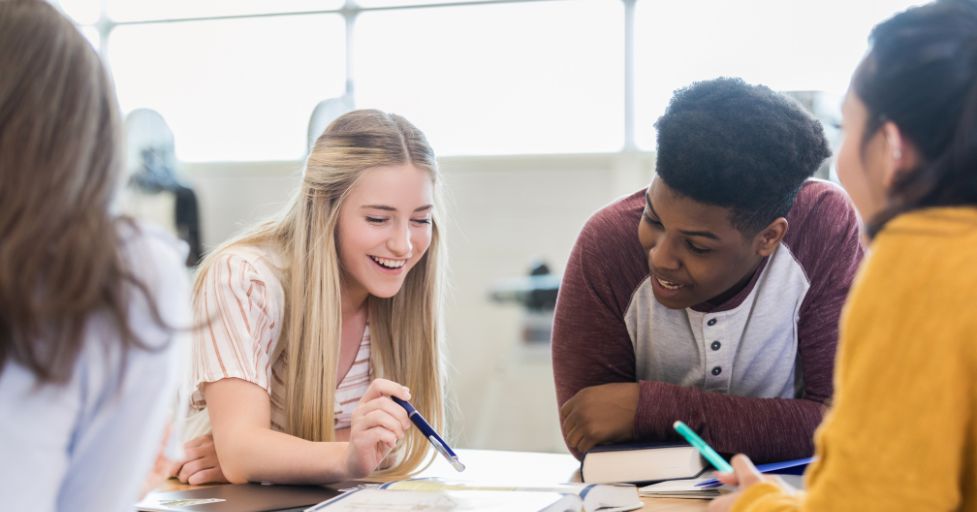
Let me tell you about Positive Peer Feedback Circles! When It’s been so awesome for school and even with my own kids at home. It’s like a self-esteem booster shot, but way more fun!
Guidelines for setting up and facilitating peer feedback sessions
Alright, so here’s the lowdown on how to set up these magical circles of positivity. It’s easier than herding cats (which, as a mom of four, I’ve had plenty of practice with!).
First things first, you need to set some ground rules:
- Only positive feedback allowed. This isn’t the time for constructive criticism or “but”s.
- Be specific. None of that “You’re nice” generic stuff. We want details, people!
- Everyone gets a turn. No wallflowers allowed in this garden of compliments.
Here’s how I set it up:
- Arrange chairs in a circle. No hiding in the back of the classroom here!
- Start with a volunteer (or nominate someone if you’re feeling brave).
- Go around the circle, with each person sharing one positive thing about the person in the “hot seat”.
- The person receiving feedback just listens and says “thank you”. No deflecting or denying allowed!
- Rinse and repeat until everyone’s had a turn.
I remember the first time I tried this with my special needs students. I was so nervous! What if no one could think of anything to say? But you know what? They blew me away with their kindness and insight. Even my most reserved student had something beautiful to say about his classmates.
Pro tip: Have some prompts ready for kids who get stuck. Things like “What’s one thing you admire about this person?” or “How has this person helped you recently?” can get the ball rolling.
Benefits of receiving positive feedback from peers
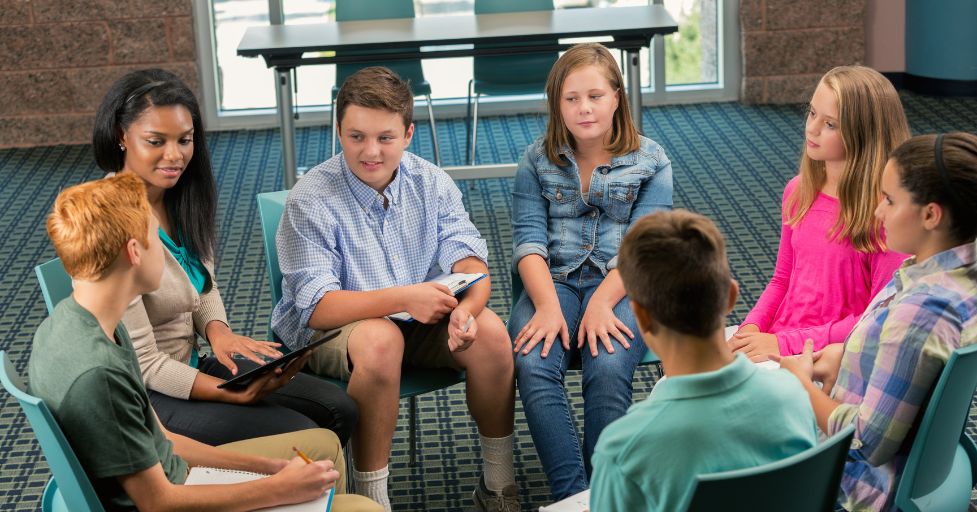
Now, here’s where the magic really happens. Receiving positive feedback from peers is like fertilizer for self-esteem. It helps our kiddos grow into confident, resilient individuals.
According to a study in the Journal of Positive Psychology, peer-to-peer appreciation can significantly boost happiness and life satisfaction. How cool is that?
Here are some of the awesome benefits I’ve seen:
- Improved self-image: When kids hear positive things about themselves from their peers, they start to believe it. It’s like holding up a mirror that only shows their best qualities.
- Increased confidence: Nothing boosts confidence like knowing your peers see your awesomeness.
- Better peer relationships: It’s hard to be mean to someone after you’ve said nice things about them. I’ve seen this activity turn rivals into friends!
- Motivation to improve: When kids hear what others appreciate about them, they often want to live up to that praise.
- Emotional resilience: These positive affirmations can be like emotional armor, protecting kids when times get tough.
I had this one student, let’s call her Sarah, who always seemed to be down on herself and other students. After our first feedback circle, she seemed to be walking on air.
How this activity builds communication skills and empathy

Okay, here’s the really cool part. This activity isn’t just about making kids feel good (although that’s awesome too). It’s also a ninja training program for communication skills and empathy.
Think about it – we’re asking kids to:
- Observe their peers closely enough to give specific feedback.
- Articulate their thoughts clearly and positively.
- Listen without interrupting (which, let me tell you, is no small feat for some kids!).
- Put themselves in someone else’s shoes to understand what might make them feel good.
That’s like a crash course in social-emotional learning right there!
I’ve seen kids who could barely string two words together at the start of the year giving eloquent, heartfelt compliments by the end. It’s like watching little communication butterflies emerge from their cocoons!
And don’t even get me started on the empathy boost. There was this one time when my most rambunctious student gave the sweetest compliment to the quietest kid in class. It was like he suddenly saw her, really saw her, for the first time. I may have teared up a little (okay, a lot).
Now, I’m not gonna lie – this activity can feel a bit awkward at first. There’s usually some nervous giggling and squirming. But stick with it! The more you do it, the more natural it becomes.
Here are some tips to make it smoother:
- Start small: Maybe just do groups of 3-4 at first.
- Model it yourself: Give some examples of specific, meaningful compliments.
- Make it a regular thing: We do ours every Friday afternoon. The kids actually look forward to it now!
- Follow up: Encourage kids to keep giving positive feedback outside the circle.
The American Psychological Association says that fostering positive peer relationships can significantly impact a child’s social and emotional development. Well, duh! But it’s nice to have the experts backing up what we see in the classroom every day.
So, are you ready to start your own Positive Peer Feedback Circle? Trust me, it’s worth pushing through any initial awkwardness. You might just be surprised at the little rays of sunshine that emerge when you give kids the chance to lift each other up. And in my book, that’s what teaching (and parenting) is all about!
Related:
7 Helpful Tips To Teach Kids Compassion and Empathy
Activity 7: Personal Achievement Timeline
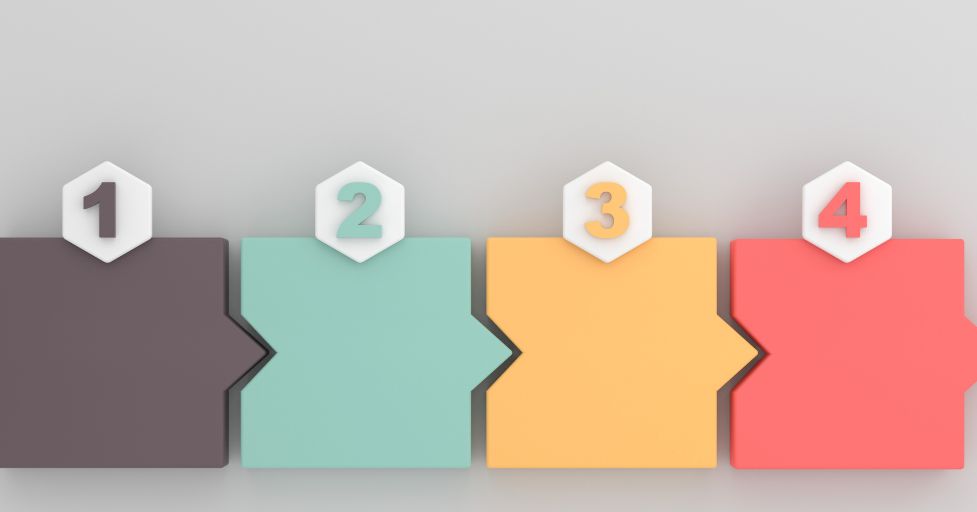
Let me tell you about this awesome activity that’s been a great benefit for self esteem building in my classroom and at home with my kiddos – the Personal Achievement Timeline. It’s like a highlight reel of your life, but way cooler and more meaningful!
Instructions for creating a visual timeline of accomplishments
Okay, so here’s the deal with creating this visual masterpiece of awesomeness. It’s super simple, but the impact? Whoa, it’s like fireworks for self-esteem!
First things first, you’ll need:
- A long piece of paper (the bigger, the better!)
- Markers, crayons, or colored pencils
- Photos, stickers, or any other decorations you want (optional, but fun!)
Now, here’s how to put it all together:
- Draw a long line across the paper. This is your timeline.
- Mark significant dates along the line. Start with your birth (duh!) and work your way up to today.
- Above the line, write down or draw pictures of your achievements. And I mean ALL of them, big and small!
- Below the line, add any challenges you’ve overcome. These are just as important as the achievements!
- Decorate it however you want. Go wild! Make it as colorful and fun as possible.
I remember when I first tried this with my special needs students. I was worried it might be too complicated. But you know what? They absolutely loved it! One of my students, let’s call him Tommy, got so into it that he insisted on bringing in baby photos to add to his timeline. It was adorable!
Pro tip: If you’re working with younger kids or those who struggle with writing, have them draw pictures instead. My preschoolers used to create the most amazing pictorial timelines – stick figure masterpieces, I tell you!
How to celebrate small wins and milestones

It’s all about celebrating those small wins, folks! We’re talking every single victory, no matter how tiny it might seem.
Did you tie your shoes for the first time? That goes on the timeline! Finally mastered that tricky math problem? Slap it on there! Made a new friend? You bet that’s going on the achievement board!
Here’s how we celebrate in my classroom:
- Weekly updates: You can take five minutes every Friday to add any new achievements from the week.
- Share and shine: Once a month, everyone gets a chance to share one achievement they’re particularly proud of.
- Achievement dance: Yes, you read that right. Have a special dance move for when someone adds a new achievement. It’s ridiculous, and the kids absolutely love it!
- Photo ops: For bigger milestones, Take a photo of the student with their timeline. These make great additions to the year-end memory book!
I’ll never forget when one of my daughters, who had been struggling with reading, finally finished her first chapter book. It was a party!!!
According to a study in the Journal of Personality and Social Psychology, celebrating small wins can significantly boost motivation and happiness. So, don’t hold back on those celebrations, no matter how silly they might seem!
The importance of recognizing progress in building self-esteem

Alright, here’s where we get to the heart of why this activity is so flippin’ awesome for building self-esteem. It’s all about recognizing progress, people!
You see, we humans have this annoying tendency to focus on what we haven’t achieved yet, instead of appreciating how far we’ve come. It’s like we’re always looking at the top of the mountain instead of enjoying the view from where we are.
The Personal Achievement Timeline flips that script. It’s a visual reminder of all the mountains we’ve already climbed. And let me tell you, that’s powerful stuff!
Here’s why recognizing progress is so crucial for self-esteem:
- It builds confidence: When kids (or adults, for that matter) see all they’ve accomplished, it boosts their belief in their abilities.
- It provides perspective: On tough days, looking at the timeline reminds us that challenges are temporary, but our awesomeness is permanent!
- It encourages persistence: Seeing past achievements can motivate us to keep pushing through current difficulties.
- It fosters a growth mindset: By focusing on progress, we reinforce the idea that abilities can be developed through effort and practice.
The American Psychological Association reports that recognizing personal growth and achievement is a key factor in developing healthy self-esteem. So, this isn’t just feel-good fluff – it’s science, baby!
Now, I’m not gonna lie – getting kids (or ourselves) to consistently recognize progress can be tough. We’re fighting against some pretty ingrained habits here. But stick with it! Make it a daily practice to ask, “What did I achieve today?” Even if it’s just “I got out of bed,” that’s progress, and it deserves to be celebrated!
So, are you ready to start your own Personal Achievement Timeline? Trust me, it’s worth the effort. You might just be surprised at how awesome you really are when you see it all laid out in front of you. And in my book, realizing your own awesomeness? That’s the biggest achievement of all!
Activity 8: The “Reframe Game” for Positive Self-Talk

Oh boy, let me tell you about the Reframe Game! This little gem has been a total lifesaver in my classroom and at home with my own teenagers. It’s like mental gymnastics, but way more fun and without the risk of pulling a muscle!
Explanation of cognitive reframing techniques
Alright, so what the heck is cognitive reframing? Fancy term, right? But don’t let it scare you off. It’s actually pretty simple once you get the hang of it.
Basically, cognitive reframing is like putting on a pair of magic glasses that help you see things differently. It’s all about taking those negative thoughts that pop into our heads (and let’s face it, we all have them) and giving them a positive makeover.
I remember when I first learned about this technique at a conference. I was skeptical, to say the least. I mean, could changing the way we think really make that big of a difference? But let me tell you, it’s been a game-changer!
Here’s the gist of it:
- Identify the negative thought
- Challenge it (Is it really true? Is there evidence to support it?)
- Replace it with a more positive or realistic thought
Sounds simple, right? Well, it can be trickier than it looks, especially for teenagers whose brains are basically emotion soup most of the time. But that’s where the Reframe Game comes in!
How to play the reframe game with teenagers
Okay, so here’s how we play the Reframe Game in the home or classroom (and trust me, it works just as well at home with my own kids):
- Start with a stack of cards or slips of paper. On each one, write a common negative thought. Things like “I’m not good at math” or “Nobody likes me.”
- Put all the cards in a bowl or hat.
- Have everyone sit in a circle (because circles are magic, I swear).
- Take turns drawing a card and reading the negative thought out loud.
- Here’s the fun part: Everyone has 30 seconds to come up with a positive reframe for that thought. The sillier, the better!
- Vote on the best reframe. The winner gets the card. See who can get the most cards. (Although it doesn’t have to be competition.)
I’ll never forget the first time we played this in class. One of my students, let’s call him Jake, drew the card that said, “I’ll never be good at public speaking.” Without missing a beat, another student yelled out, “Yeah, because you’ll be GREAT at it!” The whole class burst out laughing, and Jake couldn’t stop grinning. It was like a light bulb moment for all of us.
Pro tip: Make sure to model this yourself. Teens can smell hypocrisy a mile away, so show them how you reframe your own negative thoughts. Trust me, they’ll appreciate your honesty.
Benefits of changing negative self-talk patterns
Now, here’s where the magic really happens. Changing these negative self-talk patterns? It’s like giving your brain a superhero cape. Seriously, the benefits are amazing:
- Improved self-esteem: When you stop beating yourself up all the time, you actually start to like yourself. Crazy, right?
- Better resilience: Life’s gonna throw curveballs, but reframing helps you bounce back faster.
- Reduced anxiety and stress: Negative thoughts are like mental bullies. Reframing is like standing up to those bullies.
- Increased motivation: When you believe in yourself, you’re more likely to try new things and persevere.
- Better relationships: Positive self-talk often leads to more positive interactions with others.
According to a study in the Journal of Personality and Social Psychology, people who practice positive self-talk experience less stress and have better overall mental health. How’s that for a win?
Now, I’m not saying this is some magic cure-all. Changing thought patterns takes time and practice. There are still days when negative thoughts creep in. But the beautiful thing about the Reframe Game is that it gives kids (and adults!) tools to combat those thoughts.
Here’s a little secret: I still play this game with myself sometimes. Just the other day, I caught myself thinking, “I’m too old to learn this new technology.” But then I reframed it to, “I have so much life experience to bring to this new challenge.” Boom! Instant mood lift.
So, are you ready to give the Reframe Game a try? Trust me, it’s worth it. You might just find yourself with a bunch of teens (or adults) who are a little kinder to themselves and a lot more resilient. And in my book, that’s a win worth celebrating!
Activity 9: Skills-Based Volunteering
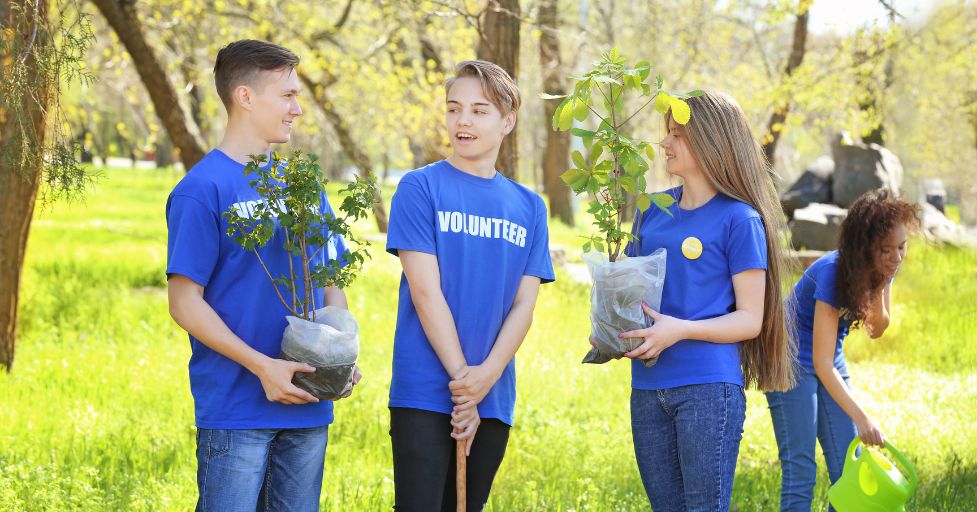
Let me tell you, folks, skills-based volunteering is like the secret sauce of building self-esteem in teens. It’s not just about doing good; it’s about doing good using what you’re good at! I stumbled upon this gem of an idea a few years back, and it’s been a game-changer for my students and my own kids.
How to identify opportunities for teens to volunteer using their skills
Alright, so here’s the deal with finding the perfect volunteer gig for teens. It’s like matchmaking, but instead of finding a date, we’re finding a cause that lights their fire and uses their superpowers.
First things first, we gotta figure out what those superpowers are. I usually start with a little brainstorming session. I ask:
- What are you really good at?
- What do you enjoy doing in your free time?
- What subjects do you rock at in school?
You’d be surprised at the answers you get! I remember my son, the one who could barely sit still for five minutes, telling me he was good at “explaining things to little kids.” Who knew, right?
Once you’ve got a list of skills, it’s time to play detective and find opportunities that match. Here are some ideas to get you started:
- Tech-savvy teens can help at senior centers teaching computer skills.
- Artsy kids can volunteer to paint murals in children’s hospitals.
- Sports enthusiasts can coach younger kids in local leagues.
- Animal lovers can help at shelters or wildlife rehab centers.
I’ll never forget when my two sons, volunteered to teach ballroom. They are champions, and so they are great at ballroom. They are so great at patience. I was so proud.
Pro tip: Don’t be afraid to create opportunities if you can’t find the perfect fit. When one of my special needs students couldn’t find a place that needed his unique talent for organizing things, we started a project to reorganize the school’s supply closet. The staff were thrilled, and he was over the moon!
The impact of helping others on self-esteem and sense of purpose

Now, here’s where the magic happens. When teens volunteer using their skills, it’s like they’ve been given a superhero cape. Suddenly, they’re not just kids anymore; they’re valuable contributors to society.
The impact on self-esteem? Off the charts! Here’s what I’ve seen:
- Increased confidence: When teens see their skills making a real difference, they start believing in themselves more.
- Improved social skills: Volunteering often means working with diverse groups of people. It’s like a crash course in communication and teamwork.
- Sense of purpose: There’s nothing quite like the feeling of knowing you’ve made someone’s life better.
- Stress reduction: Focusing on others’ needs can help put personal problems in perspective.
According to a study by United Health Group, 93% of people who volunteer report an improved mood, and 76% say it has made them feel healthier. Talk about a win-win!
I had this one student, let’s call him Jake, who always seemed to be getting into trouble. We found him a volunteering gig at an animal sanctuary, and it was like someone flipped a switch. He was more so helpful and loved it!
H3: Tips for finding age-appropriate volunteering activities
Okay, so we’ve got our teens all fired up to volunteer, but how do we make sure they’re not in over their heads? Here are some tips I’ve picked up along the way:
- Start local: Check out community centers, libraries, and schools. They often have teen-friendly volunteer opportunities.
- Use online resources: Websites like VolunteerMatch.org and JustServe.org can help you find opportunities tailored to teens’ interests and ages.
- Consider family volunteering: This is great for younger teens who might not be ready to go solo yet.
- Look for short-term commitments: Teens’ schedules can be crazy. One-day events or flexible schedules are often more manageable.
- Ensure safety: Always check the organization’s policies on working with minors.
- Match the activity to the teen’s maturity level: Some kids are ready to work directly with people in need, while others might do better behind the scenes.
I learned this last one the hard way when I sent my overly enthusiastic 13-year-old to volunteer at a food bank.. Let’s just say it was a bit overwhelming for her. We scaled back to helping sort donations, and that was much more her speed.
Now, I’m not gonna lie – getting teens excited about volunteering can sometimes be diffucult. There have been plenty of eye rolls and “do I have to?” moments in my house. But stick with it! Once they find that perfect fit, it’s like watching a lightbulb turn on.
So, are you ready to help your teens find their volunteering superpower? Iit’s worth the effort. You might just be surprised at the confident, purposeful young adults that emerge. And who knows? You might even find yourself inspired to dust off your own superhero cape and join in the fun!
Activity 10: The “Future Self” Letter

Okay, folks, let me tell you about one of my absolute favorite activities – the “Future Self” letter. It’s like a time capsule, but instead of old candy wrappers and boy band posters (showing my age here!), we’re packaging up dreams, hopes, and a whole lotta motivation!
Guidelines for writing a letter to one’s future self
So, how do we go about writing to our future selves? It’s not like we can just shoot off a quick text to Future Us (though wouldn’t that be cool?). Here’s how I guide my students and my own kiddos through this process:
- Pick a timeframe: I usually suggest 5 years, but it can be any time that feels right. For my special needs students, sometimes we go with just one year.
- Set the scene: Start by describing where you are right now. What grade are you in? What are your current interests? Who are your friends?
- Dream big: Write about where you hope to be in the future. What do you want to achieve? What kind of person do you want to become?
- Ask questions: What would you like to know about your future self? It’s like playing 20 Questions with… well, yourself!
- Give advice: What words of wisdom would you like to share with your future self?
- Be positive: Focus on hopes and aspirations rather than fears or worries.
I remember when I first did this with my oldest. She was so stumped about what to write that she just sat there, staring at the blank page. So, I started asking her questions. “What’s your favorite subject in school right now?” “If you could have any job in the world, what would it be?” Before we knew it, she had filled two whole pages!
Pro tip: Encourage creativity! One of my students drew a comic strip instead of writing a letter. It was awesome, and totally captured his personality.
How this activity promotes goal-setting and self-reflection
This isn’t just a fun writing exercise – it’s a powerful tool for goal-setting and self-reflection. It’s like planting seeds for personal growth!
Here’s what I’ve seen this activity do:
- Clarifies goals: When you have to put your dreams on paper, it makes them feel more real and achievable.
- Encourages long-term thinking: In a world of instant gratification, this helps kids think beyond the next five minutes.
- Boosts self-awareness: Reflecting on who you are now and who you want to be can be eye-opening.
- Provides motivation: Knowing you’ll be “accountable” to your future self can be a powerful motivator.
- Builds optimism: Focusing on positive future outcomes can help combat negative thinking.
According to a study in the Journal of Applied Psychology, people who write down their goals are 42% more likely to achieve them. How’s that for motivation?
I had this one student, who was really struggling with self-esteem. When we did the Future Self letter, he wrote about becoming a singer and going on a tv show to highlight his talents. Fast forward four years, and guess who went on a tv talent show Yep! His dream was not longer a dream but a goal and he made It happen!
Ideas for storing and revisiting the letter

Alright, so we’ve poured our hearts out onto paper. Now what? We can’t just shove it in a drawer and forget about it! Here are some fun ways to store and revisit these letters:
- Time capsule: Seal it up in a container with a few other meaningful items. Just make sure it’s waterproof!
- Digital storage: Scan the letter and set a reminder on your phone or computer to open it in the future.
- Trusted guardian: Give it to a parent, teacher, or mentor to keep safe and return at the designated time.
- Special box: Create a decorated box just for this purpose. My daughter covered hers in so much glitter, I think I’m still finding sparkles years later!
- Annual tradition: Write a new letter each year and read the previous year’s letter.
I learned the hard way that you need a good storage system. I once had a whole class’s letters get mixed up with scratch paper and nearly thrown out! Talk about a heart-stopping moment for a teacher.
Now, here’s the really cool part – revisiting the letter. I usually suggest doing a mid-point check-in. It’s like a pit stop on this journey of self-discovery.
Of course, not every letter reading goes smoothly. Sometimes goals change, or life throws curveballs. That’s okay! It’s all part of the growing process. I always tell my students (and my own kids) that it’s not about perfectly predicting the future, it’s about setting intentions and reflecting on growth.
So, are you ready to write a letter to your future self? Or maybe help a teen in your life write one? Trust me, it’s an incredibly powerful exercise. Who knows? You might just be setting in motion the first steps towards some amazing achievements. And even if the future doesn’t look exactly like what’s in that letter, the journey of self-reflection and goal-setting is valuable in itself. Happy writing, time travelers!
Conclusion: Self-Esteem Activities for Teens
By incorporating positive discipline techniques, we’re not just boosting their confidence – we’re equipping them with lifelong skills for success and happiness. Remember, every small step counts! Start implementing these activities today, and watch your teens blossom into self-assured, resilient individuals. Together, let’s create a generation of empowered youth ready to take on the world!
FAQ Self Esteem Activities for Teens
- Q: How can I help my teen build self-esteem? (Keywords: teen self-esteem tips, boost teenage confidence)
A: Try positive reinforcement, encourage their interests, and use activities like vision boards or gratitude jars. Celebrate small wins and teach them to reframe negative thoughts. Remember, it’s a process – be patient and consistent in your support. - Q: What’s positive discipline and how does it work? (Keywords: positive discipline techniques, effective teen discipline)
A: Positive discipline focuses on teaching and guiding rather than punishing. It involves setting clear expectations, using natural consequences, and encouraging problem-solving. This approach helps teens learn from mistakes and builds stronger relationships with parents. - Q: Are there quick self-esteem activities for busy teens? (Keywords: quick self-esteem exercises, teen confidence boosters)
A: Yes! Try daily affirmations, 5-minute journaling, or the “3 good things” exercise before bed. Even brief moments of positive self-reflection can make a big difference over time. Consistency is key, so find short activities that fit easily into their routine. - Q: How can volunteering help with teen self-esteem? (Keywords: teen volunteering benefits, community service self-esteem)
A: Volunteering gives teens a sense of purpose and helps them recognize their own value. It builds new skills, expands their social circle, and shows them they can make a positive impact. Look for opportunities that match their interests for the best results. - Q: What if my teen resists self-esteem activities? (Keywords: motivating reluctant teens, overcoming teen resistance)
A: Start small and make it fun. Try turning activities into games or challenges. Lead by example by doing the activities yourself. Explain the benefits in terms they care about, like improved performance in sports or better social connections. Be patient and keep offering opportunities without pressure.
GET FREE ACCESS TO OUR LIBRARY OF FREE PRINTABLES AND RESOURCES!
Enter Your Name and Email for FREE Access to our Library of FREE Home and Family Printables Series!





